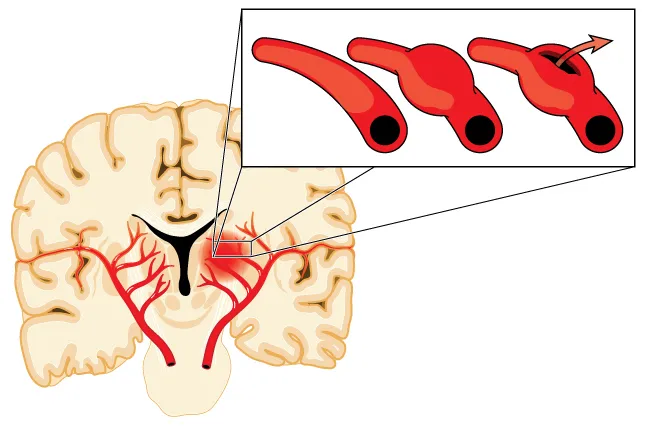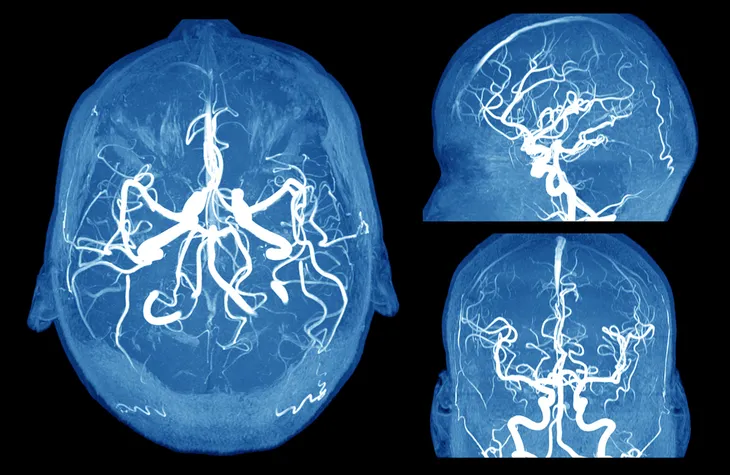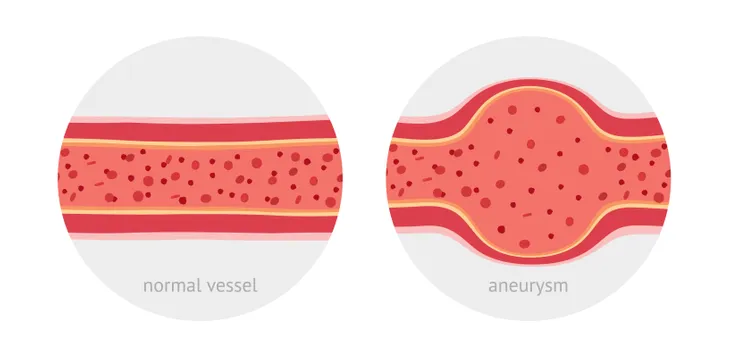Would you realize if you, or someone you loved, was suffering a brain aneurysm? According to data surveyed by the Lisa Colagrossi Foundation (LCF), likely not after the survey results revealed that 93-percent of Americans admitted their knowledge about brain aneurysms ranged from limited to non-existent.
Scary stuff, however, here’s how you can identify all the signs and symptoms of an aneurysm…
1. What’s a Brain Aneurysm?
The Langone Medical Center at New York University explains that a brain aneurysm results due to weakness in the wall of a blood vessel within the brain.
As the strength in the vessel’s wall deteriorates, the pressure from blood flow could cause a bulge and rupture, causing a bleed into the space and tissue around the brain.
2. Un-Ruptured Aneurysms
Research from the LCF indicates that up to 9-percent of the U.S. population are currently living with unruptured aneurysms. In fact, if the aneurysm never ruptures, many folks will never realize it’s existence.
LCF data notes that a magnetic resonance imaging (MRI) scan can identify an aneurysm, but your doctor may not suggest treatment if it’s small or if it doesn’t pose a risk for leakage or rupture.
3. Primary Signs of a Ruptured Aneurysm
The most notable signals that an aneurysm has ruptured is a blinding headache (usually right behind the eyes), which may be accompanied by a tingling sensation in the face and neck, as well as potential light sensitivity (or photophobia) and neck stiffness (or nuchal rigidity).
Patients may also suffer from extreme fatigue, weakness of the limbs, blurred vision, and seizures. In rarer cases, patients describe a sensation of being “hit by lightning” and a loud “boom” as the aneurysm ruptures.
4. When a Rupture Occurs…
When a brain aneurysm leaks or ruptures, even a tiny leak will cause tremendous irritation and immense pressure within the brain. The leak many only occur for a few seconds before a platelet plug forms. In addition, if a leak or rupture occurs, essential blood supply will be cut off to vital areas and may cause the patient to lose consciousness.
The Society of Neurointerventional Surgery claims that a subarachnoid hemorrhage is fatal for 10- to 20-percent of patients before they ever reach the hospital. A ruptured aneurysm is fatal for 40- to 50-percent within the next 30-days.
5. Seek Emergency Medical Help Immediately
If you or a loved one experiences the above symptoms, don’t delay, call for an ambulance immediately! If it is a leak or rupture of a brain aneurysm, time is of the essence.
According to further data from the LCF, roughly one-third of patients still die or experience lasting cognitive impairment following emergency treatment for a ruptured brain aneurysm.








